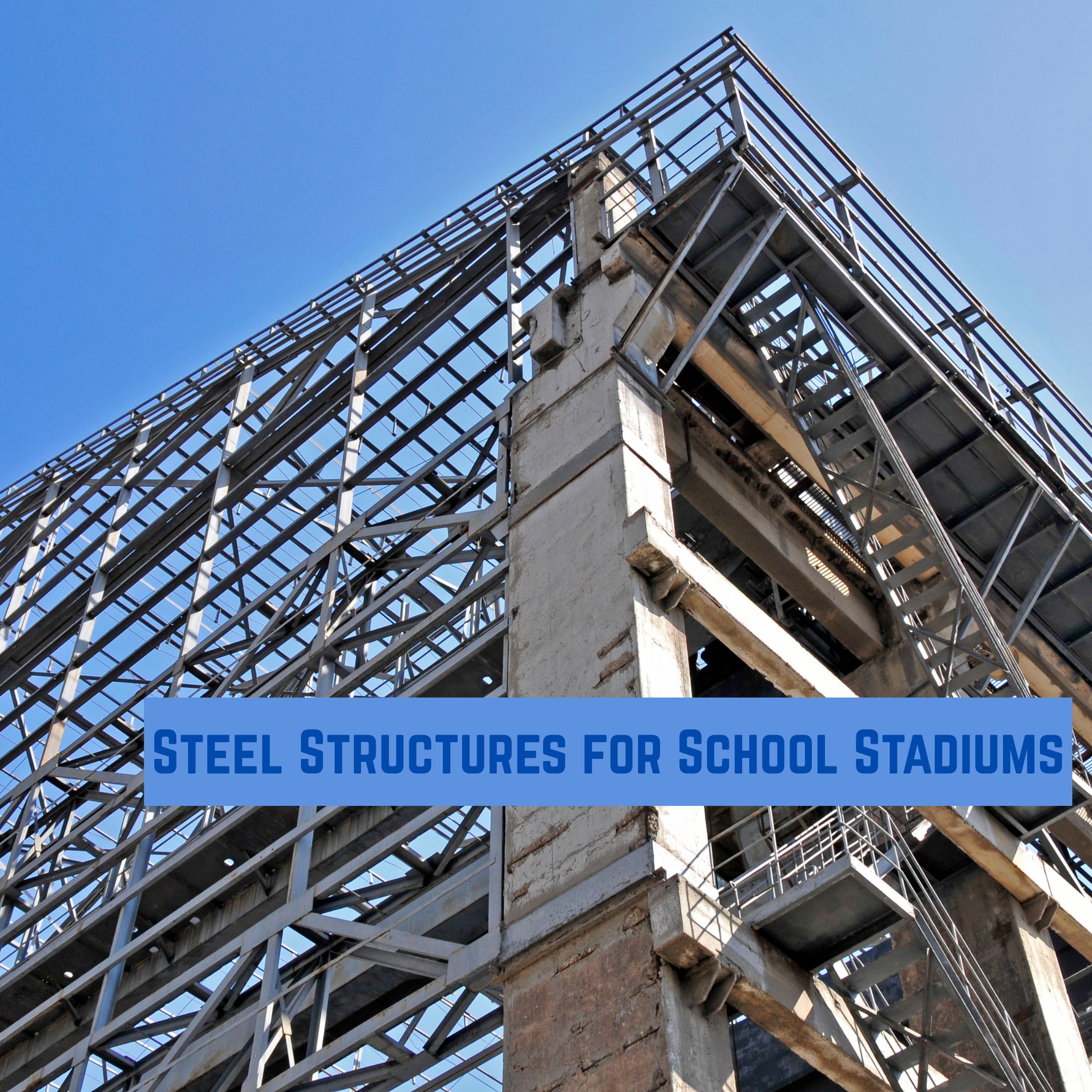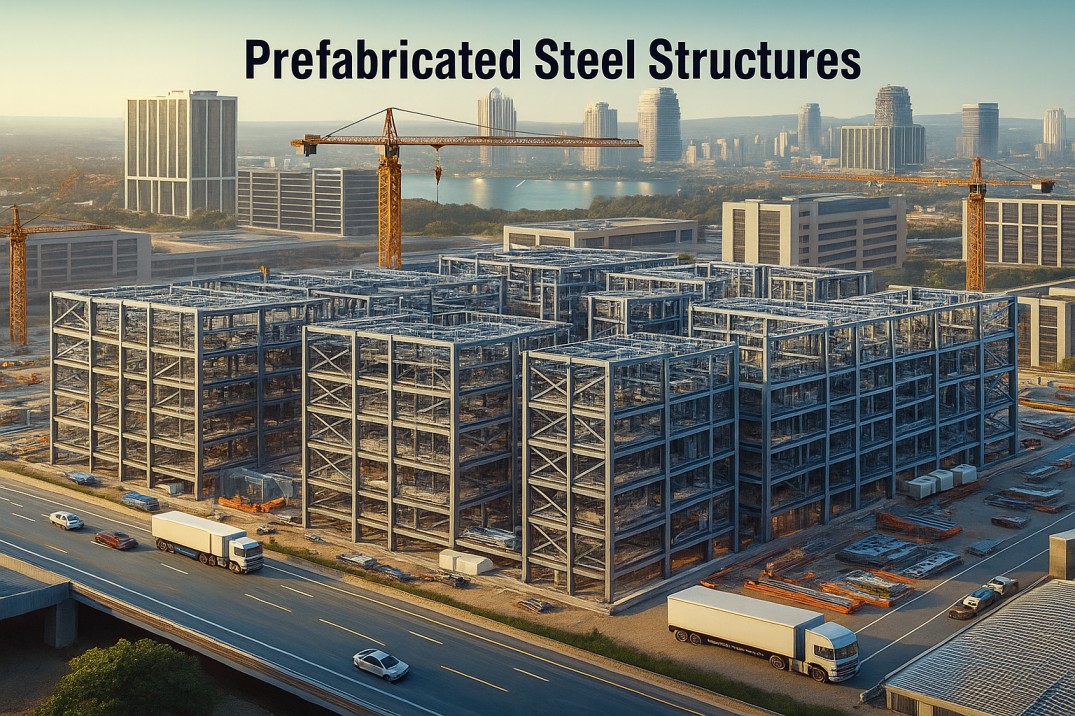Prefabricated Steel Structures: Transforming School Sports Stadium Infrastructure

As educational institutions continue to place emphasis on extracurricular activities, school sports stadiums are becoming essential components of their infrastructure. The quality and durability of these stadiums play a crucial role in ensuring that students, athletes and spectators experience top-tier sports facilities. Traditional construction methods often involve long timelines and high costs, making it difficult for schools to meet these growing demands. This is where prefabricated steel structures come into play, offering efficient, cost-effective and durable solutions for school sports stadiums.
Prefabricated steel construction has emerged as a game-changer for schools looking to build or upgrade their sports facilities. In particular, pre-engineered steel buildings, have become increasingly popular due to their rapid construction, customizable designs and long-lasting performance. This article delves into how prefabricated steel sports complexes are transforming school sports stadium infrastructure, making them an ideal choice for modern educational institutions.
Advantages of Prefabricated Steel Structures for School Sports Stadiums
In the past, building a sports stadium at a school would involve significant planning, labor and time. Prefabricated steel construction, however, brings a host of advantages, including reduced construction time, cost savings and high durability. Below are some key benefits of adopting prefabricated steel structures for school sports stadiums.
Rapid Construction and Reduced Downtime
Time is often a critical factor when building or renovating sports stadiums, especially in schools where students need access to the facilities year-round. Prefabricated steel construction speeds up the process by utilizing pre-engineered components that are fabricated off-site. These components are then delivered to the site and assembled quickly, minimizing construction time and allowing schools to begin using the sports stadium sooner.
- Fast Assembly: Components such as beams, columns and roofs are pre-manufactured, which streamlines the construction process.
- Minimal Disruption: Since PEB sports stadiums are faster to assemble, there is less disruption to school activities and surrounding environments.
The ability to get a steel stadium construction completed faster is an immense advantage, especially when schools need to prepare for sports seasons or other community events.
Cost-Effectiveness
Building a school sports stadium is a significant financial commitment and prefabricated steel stadiums offer a cost-effective solution. By using prefabricated steel structures, schools can significantly lower both construction and long-term operational costs.
- Lower Labor Costs: Since the components are pre-manufactured, there is less on-site labor required.
- Material Efficiency: Prefab stadiums are constructed with minimal waste, meaning fewer materials are wasted during the building process.
- Energy Savings: These buildings are designed with energy efficiency in mind, which helps reduce long-term heating and cooling costs once the facility is operational.
Overall, prefabricated steel construction provides schools with a cost-effective solution without compromising on quality or durability.
Durability and Weather Resistance
The durability of a steel stadium construction is vital, particularly when it comes to withstanding adverse weather conditions. Steel’s natural strength and resilience make it an excellent material for sports stadium infrastructure.
- Weather-Resistant: Steel stadium structures are resistant to damage from rain, UV exposure and extreme temperatures, ensuring long-lasting performance in all climates.
- Seismic and Wind-Resistant: PEB sports stadiums are engineered to handle local geographic challenges, such as high winds or seismic activity, providing a safe and secure environment for spectators and athletes alike.
These features ensure that prefabricated steel sports complexes can withstand heavy use and the elements over many years without significant degradation.
Design Flexibility and Customization
Each school has unique needs and prefabricated steel sports complexes offer flexibility in design to accommodate these requirements. Whether it’s for a steel structure for school stadiums or a large-scale multi-purpose complex, prefabricated steel structures can be easily customized to meet specific functional and aesthetic demands.
- Customizable Sizes: Prefab stadiums come in a variety of sizes, from smaller facilities for local events to large, high-capacity stadiums for national competitions.
- Modular Design: PEB sports stadiums are modular, which allows for future expansion. As the school’s needs evolve, additional sections of the structure can be added with minimal disruption.
This flexibility ensures that schools can design a sports stadium that is well-suited to their present needs while also allowing for future expansion.

Maintenance and Long-Term Performance
Once the steel stadium construction is complete, the maintenance requirements are significantly lower compared to traditional buildings. Steel is a durable, low-maintenance material, meaning schools can focus on their primary goal of providing quality sports facilities rather than dealing with repairs.
- Low Maintenance: Prefab stadiums require less upkeep due to the inherent durability of steel. The material resists corrosion, pests and weathering, all of which can impact the longevity of other types of construction.
- Longevity: Prefabricated steel sports complexes are designed to last for decades with minimal degradation, reducing the need for frequent repairs and replacements.
This makes prefabricated steel structures a long-term investment for schools looking to create high-performance sports infrastructure.
Key Considerations When Choosing Prefabricated Steel for School Sports Stadiums
While prefabricated steel structures offer numerous benefits, it is essential for schools to carefully evaluate their specific needs before embarking on a construction project. Below are some important factors to consider when choosing steel stadium construction solutions.
Climate and Environmental Factors
The geographical location of the school plays a crucial role in determining the type of prefabricated steel structure needed. Schools located in areas prone to extreme weather conditions (e.g., heavy rainfall, high winds or intense heat) should prioritize steel stadium construction solutions designed to withstand such conditions.
Budget and Cost Estimates
As with any major infrastructure project, budgeting is critical. It is important to assess the total cost of ownership, including the initial construction costs, ongoing maintenance and potential for future expansion. Although prefabricated steel structures tend to be cost-effective, schools should work closely with contractors to ensure the project stays within budget while meeting all required standards.
Local Building Codes and Regulations
Schools must ensure that their prefabricated steel stadium complies with local building codes and safety regulations. It is essential to work with an experienced contractor who understands the specific codes for sports stadiums in the region to avoid delays or compliance issues during construction.
Conclusion
Prefabricated steel structures are revolutionizing the way schools approach the construction of sports stadiums. With their ability to provide rapid construction, cost-effectiveness, high durability and design flexibility, prefabricated steel sports complexes offer an ideal solution for modern educational institutions. Whether it’s a steel structure for school stadiums or a larger, multi-functional facility, the use of steel stadium construction ensures long-lasting, high-performance sports infrastructure for students and communities.
By choosing pre-engineered sports stadium solutions, schools can meet the growing demand for high-quality sports facilities while maintaining budgetary and time constraints. With enhanced customization options and superior resilience to environmental factors, prefabricated steel construction is a wise choice for educational institutions aiming to enhance their sports infrastructure.
FAQs About Prefabricated steel structures
Prefabricated steel structures offer rapid construction, cost-efficiency, design flexibility, durability and long-term performance for school sports stadiums.
Prefabricated steel structures significantly reduce construction time, allowing schools to complete their sports stadium projects much faster than traditional methods.
Yes, prefabricated steel sports complexes are highly customizable, offering various sizes, layouts and features to accommodate different school requirements.
Steel structures are highly resistant to extreme weather conditions, including high winds, heavy rainfall and temperature fluctuations, making them ideal for sports stadiums in diverse climates.
Prefabricated steel stadiums require minimal maintenance due to the durability of steel, reducing the need for frequent repairs and prolonging the lifespan of the facility.

Founder & CEO
Mukesh Patel is the Founder & CEO of Build Matt ltd, specializing in Pre-Engineered Buildings (PEB) and general steel fabrication. With advanced technology, modern machinery, and a skilled workforce, he delivers efficient and high-quality solutions across East and Central Africa, including Uganda, Kenya, Tanzania, Congo, South Sudan, Rwanda, and Burundi.
- The Growing Demand for Prefabricated Walkways in Uganda’s Various Industries
- How to Ensure Safety Compliance During Rafter Steel Structure Installation?
- Fabrication Challenges in Large-Span Steel Structure Trusses and How to Overcome Them
- The Role of Guardrails, Toe Guards and Landings in Staircase Safety Compliance
- The Rise of Mezzanine Floors in Uganda’s Warehousing and Logistics Boom






